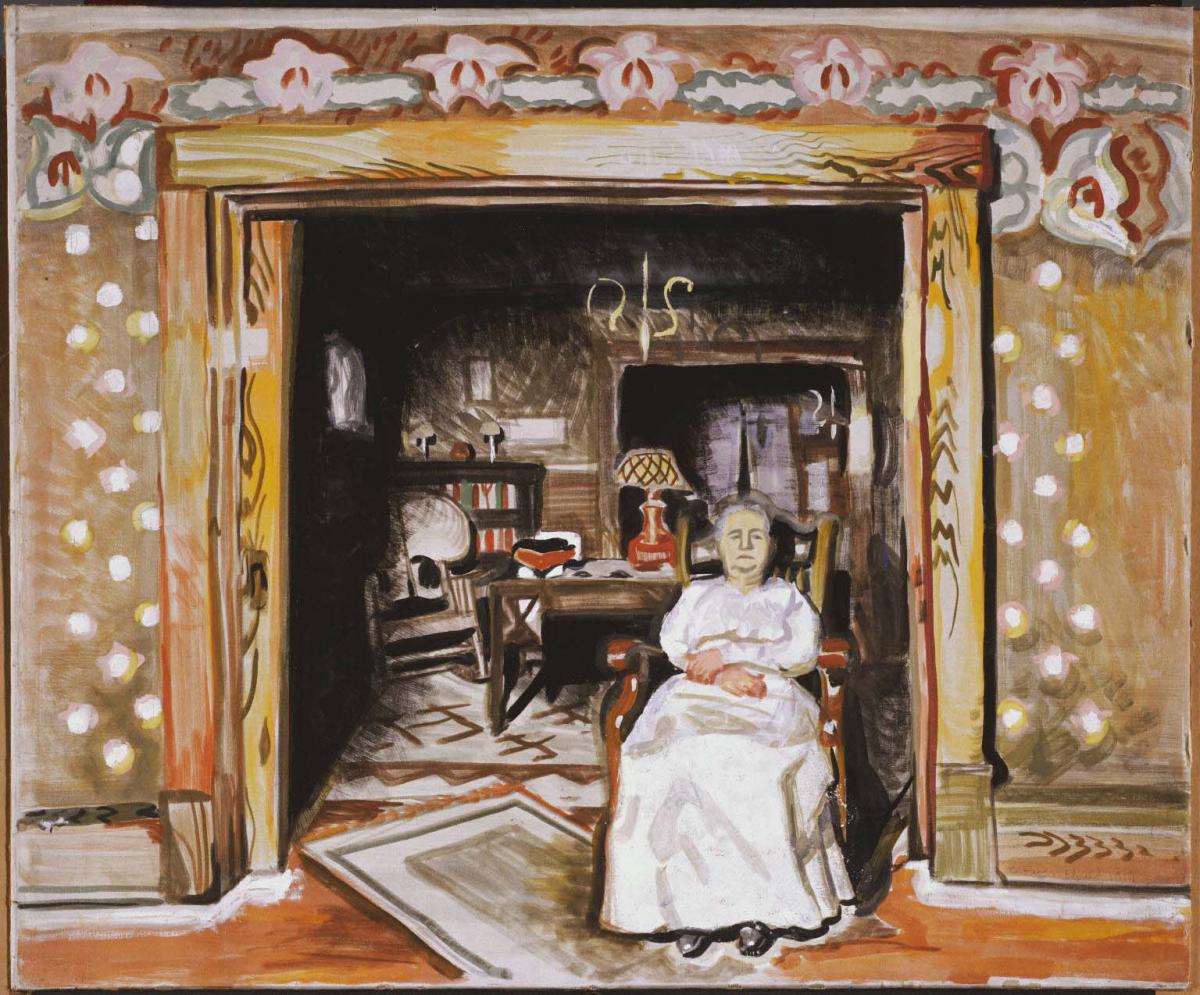Woman in Doorway
Charles Burchfield ( 1917 )

Charles Burchfield’s Woman in Doorway is a portrait of his mother, Alice Murphy Burchfield. Though she knew little about art, Mrs. Burchfield supported her son’s ambitions to become an artist. Burchfield had a close and loving relationship to his mother, who he referred to as heroic for her struggle and sacrifice to raise her family following the death of her husband.
Not typically known as a portraitist, Burchfield usually only implied the presence of people or showed them distantly through windows or doorways. Burchfield claimed that his painting was “not an attempt to produce a ‘bona fide’ portrait, but merely a study of a mood in which the figure is simply one of many objects.” He painted his mother inside her six-room frame house in Salem, where he was raised. While the interior view is unusual, the emotionally charged setting and the sense of space as an extension of the people who lived there are typical of his art. Created in what Burchfield later referred to as his “golden year,” the painting was one of his attempts to recapture the moods and experiences of childhood. Recently returned from his aborted attempt to study art in New York, Burchfield was welcomed by his family. In this context, the painting may be understood as a loving tribute to his mother and home.
This painting is related to several works that Burchfield painted in 1917—many of which Phillips bought—that show solitary, elderly women inside their homes or in their gardens. These portraits suspend time as a means to hold on to cherished memories. Duncan Phillips admired the painting greatly and saw it as predicting the artist’s later interests. In 1940, when Burchfield finally saw the painting at the Phillips Memorial Gallery, he responded emotionally: “I saw with a pang, my study of Mother in the Doorway.”